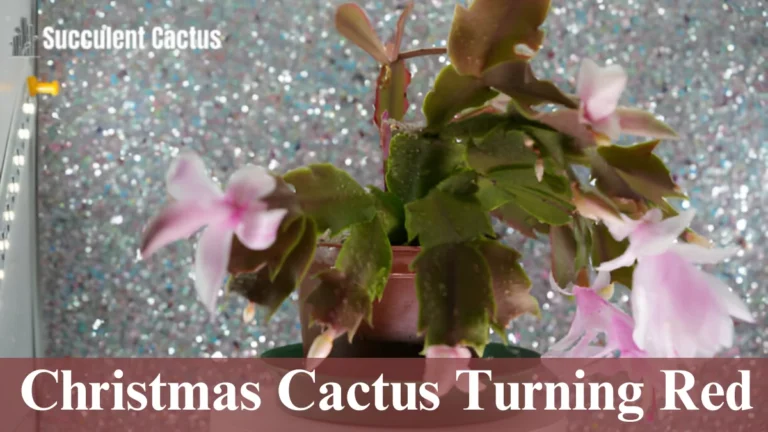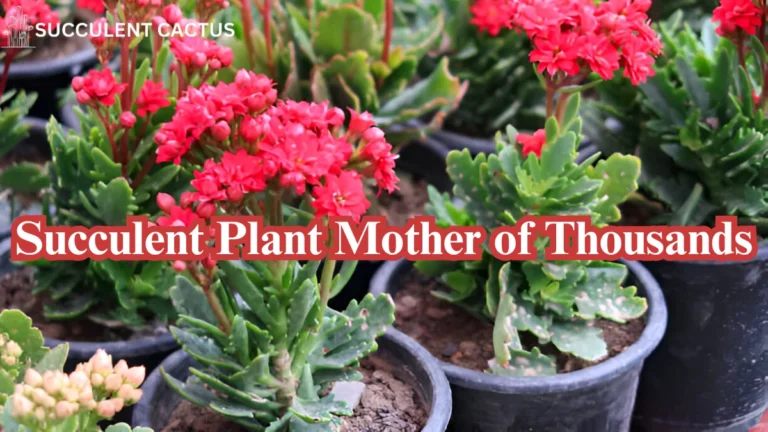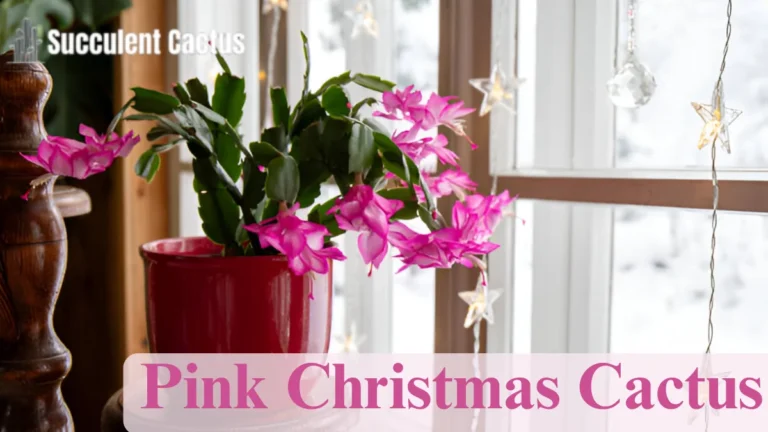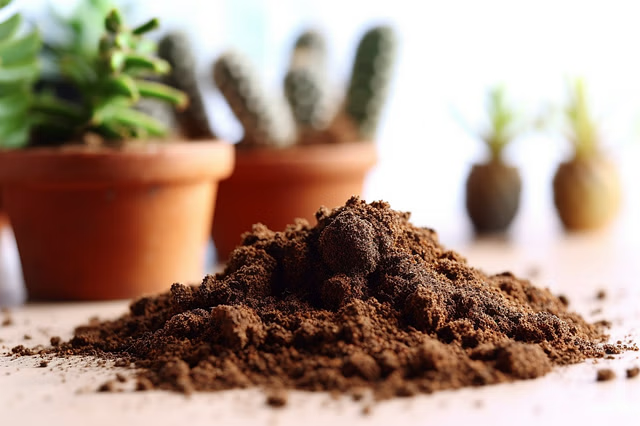Exploring the Los Angeles Cactus and Succulent Society: A Hub for Plant Enthusiasts

The Los Angeles Cactus and Succulent Society (LACSS) is more than just a group of plant enthusiasts; it’s a thriving community dedicated to the cultivation, education, and appreciation of cacti and succulents. With its rich history, engaging events, and invaluable resources, the society offers a gateway for beginners and experts alike to dive into the fascinating world of these resilient and captivating plants. In this comprehensive guide, we’ll explore every aspect of the Los Angeles Cactus and Succulent Society, from its mission and events to its role in promoting sustainable gardening.
What Is the Los Angeles Cactus and Succulent Society?
Origins of LACSS
The Los Angeles Cactus and Succulent Society (LACSS) was founded in the mid-20th century by a group of passionate plant enthusiasts. Their goal was to create a space where individuals could exchange knowledge, showcase collections, and foster a love for cacti and succulents.
- Founded: 1935
- Purpose: Education, conservation, and appreciation of desert flora
- Membership: Open to all levels of expertise
Quote from a Member:
“Joining LACSS opened up a world of learning and connection for me. It’s a great place to grow your passion for plants.”
LACSS Mission and Vision
The society’s mission focuses on:
- Education: Hosting workshops, lectures, and demonstrations to teach proper care techniques.
- Conservation: Advocating for the preservation of endangered succulent species.
- Community Building: Creating a welcoming environment for plant enthusiasts of all backgrounds.
Pro Tip: Attending an LACSS meeting is an excellent way to meet like-minded individuals and expand your plant knowledge.
Membership Benefits
Becoming a member of LACSS comes with numerous perks, such as:
- Access to exclusive events like plant sales and shows.
- Monthly newsletters featuring care tips, articles, and member highlights.
- Networking opportunities with experienced collectors and horticulturists.
Events Organized by the Los Angeles Cactus and Succulent Society
Monthly Meetings
The LACSS holds monthly meetings where members gather to discuss various topics related to cacti and succulents. These meetings often feature guest speakers, hands-on demonstrations, and plant exchanges.
- When: Typically held on the first Thursday of each month.
- Where: Sepulveda Garden Center in Los Angeles.
- Activities: Educational lectures, plant swaps, and Q&A sessions.
Fun Fact: Each meeting includes a “show-and-tell” segment where members showcase unique plants from their collections.
Annual Drought-Tolerant Plant Festival
One of the society’s signature events is the Annual Drought-Tolerant Plant Festival, which highlights the beauty and benefits of drought-resistant plants.
- Highlights:
- Plant sales featuring rare and exotic specimens.
- Workshops on topics like soil preparation and pest control.
- Exhibits showcasing creative succulent arrangements.
- Target Audience: Perfect for beginners and experienced gardeners alike.
Tip for Visitors: Arrive early for the first pick of rare plants!
Plant Shows and Competitions
LACSS also organizes plant shows and competitions where members can display their prized specimens. These events promote healthy competition and inspire attendees to improve their collections.
| Category | Description |
| Best in Show | Awarded to the most outstanding plant overall. |
| Creative Arrangement | Recognizes innovative succulent designs. |
| Rare Plant Showcase | Features hard-to-find species. |
Educational Programs
Workshops and Demonstrations
LACSS offers workshops and demonstrations designed to teach essential care techniques, such as:
- Repotting: How to safely repot cacti and succulents without damaging their roots.
- Propagation: Methods like leaf cuttings and offsets to grow new plants.
- Pest Management: Identifying and addressing common pests like mealybugs.
Lectures by Experts
The society frequently invites horticulturists, botanists, and experienced collectors to speak on specialized topics, including:
- The role of cacti in desert ecosystems.
- Conservation efforts for endangered species.
- Designing drought-tolerant landscapes.
Educational Materials
LACSS members have access to a wealth of resources, such as:
- Books and articles on succulent care.
- Online guides for identifying and growing different species.
- A lending library with reference materials
Cacti and Succulents: A Primer
What Makes a Plant a Cactus or Succulent?
While all cacti are succulents, not all succulents are cacti. Here’s a breakdown:
| Feature | Cactus | Succulent (Non-Cactus) |
| Areoles | Present | Absent |
| Spines | True spines | Modified leaves or thorns |
| Family | Cactaceae | Various families |
Popular Cactus Species
- Saguaro (Carnegiea gigantea): Iconic tall cactus native to the Sonoran Desert.
- Golden Barrel (Echinocactus grusonii): A round, spiny cactus popular in landscaping.
- Prickly Pear (Opuntia): Recognizable by its flat, paddle-shaped stems.
Popular Succulent Species
- Aloe Vera: Known for its medicinal properties and spiky leaves.
- Jade Plant (Crassula ovata): A low-maintenance plant with coin-shaped leaves.
- Echeveria: Rosette-forming succulents with vibrant colors.
Membership Opportunities in the Los Angeles Cactus and Succulent Society
Who Can Join the LACSS?
The Los Angeles Cactus and Succulent Society (LACSS) is open to everyone, from complete beginners to experienced collectors. Whether you’re interested in building your first succulent garden or showcasing your prized cacti collection, LACSS provides a welcoming environment for enthusiasts of all levels.
Benefits of joining:
- Build friendships with like-minded individuals.
- Gain access to rare plants and exclusive resources.
- Learn from some of the most experts in the field.
Membership Tiers and Costs
LACSS typically offers several membership tiers to accommodate individual and family needs:
| Membership Type | Annual Fee | Benefits |
| Individual | $25 | Monthly newsletters, access to events, discounts on plants. |
| Family | $35 | Includes benefits for two adults in the same household. |
| Student | $15 | Discounted rate for students with a valid ID. |
Membership fees support the society’s activities, events, and conservation efforts.
Volunteer and Leadership Opportunities
LACSS encourages members to get involved by volunteering or taking on leadership roles. Opportunities include:
- Assisting with events like the Annual Plant Festival.
- Helping with membership drives or fundraising.
- Serving as a board member or committee chair.
“Volunteering has deepened my connection to the society and allowed me to give back to the community,” says a long-time LACSS member.
The Role of LACSS in Conservation
Protecting Endangered Cacti and Succulents
One of LACSS’s primary missions is to advocate for preserving rare and endangered species. Habitat destruction, illegal poaching, and climate change have put many cacti and succulents at risk.
Example of conservation success:
The society partnered with local conservation groups to protect the Dudleya, a genus of California-native succulents targeted by poachers. Their efforts included public education campaigns and habitat restoration projects.
Promoting Sustainable Gardening
LACSS educates members and the public about sustainable gardening practices, such as:
- Using drought-tolerant plants to reduce water usage.
- Avoiding harmful chemicals that can damage soil and local ecosystems.
- Encouraging the use of native plants to support pollinators.
Pro Tip: Incorporating cacti and succulents into your landscape is a beautiful and eco-friendly way to garden in Southern California’s arid climate.
Collaborating with Other Organizations
Society often partners with botanical gardens, conservation organizations, and universities to expand their impact. For example, LACSS has worked with the California Native Plant Society to promote the cultivation of native succulents.
Popular Plants Among LACSS Members
Cacti Favorites
Among the many cacti celebrated by LACSS members, these stand out:
- Golden Barrel Cactus (Echinocactus grusonii): A striking plant with a round shape and golden spines.
- Bishop’s Cap (Astrophytum myriostigma): Known for its unique star-like appearance.
- Fishhook Cactus (Mammillaria): Small, spiny cacti with charming flowers.
Succulent Favorites
Succulents that aren’t cacti are also widely appreciated. Common favorites include:
- Haworthia: Compact, slow-growing plants with translucent leaves.
- Lithops: Also called “living stones,” these succulents mimic pebbles.
- Agave: Known for its architectural rosettes and impressive size.
Rare Finds
Some members specialize in collecting rare and unusual species, such as:
- Ariocarpus: A slow-growing cactus prized for its unique, warty appearance.
- Euphorbia obesa: Resembling a round ball, this plant is a collector’s gem.
Growing Cacti and Succulents in Los Angeles
Understanding Los Angeles’ Climate
Los Angeles’ Mediterranean climate is ideal for growing many cacti and succulents. Key climate features include:
- Mild winters: Rarely dropping below freezing.
- Hot, dry summers: Perfect for drought-tolerant plants.
- Low rainfall: Encourages water-efficient gardening.
Best Practices for Outdoor Cultivation
To successfully grow succulents and cacti in Los Angeles, follow these tips:
- Use well-draining soil to prevent root rot.
- Water sparingly, allowing soil to dry between watering sessions.
- Provide afternoon shade for species sensitive to intense heat.
Indoor Growing Tips
If you prefer growing indoors, remember:
- Place plants near a sunny window.
- Use pots with drainage holes to avoid overwatering.
- Rotate plants regularly for even light exposure.
Case Studies: Success Stories from LACSS Members
From Novice to Expert
One member, Jane Martinez, shared her journey of transforming her backyard into a thriving cactus garden after joining LACSS.
- Challenge: Poor soil and lack of knowledge.
- Solution: Attending LACSS workshops and consulting with members.
- Outcome: Jane now has a stunning collection of over 50 species.
Rescuing Rare Plants
In 2022, LACSS members collaborated to rescue a collection of rare cacti from an abandoned property. The plants were cared for and later auctioned, raising funds for the society.
Inspiring the Next Generation
Through its outreach programs, LACSS has inspired students to pursue careers in botany and conservation. One participant credited the society for sparking her interest in becoming a horticulturist.
the Cultural Significance of Cacti and Succulents
Historical Uses of Cacti and Succulents
Cacti and succulents have held cultural importance for centuries. Indigenous peoples in the Americas, particularly in Mexico and the southwestern United States, utilized cacti like prickly pear and agave for food, medicine, and spiritual purposes.
Examples:
- Prickly Pear (Opuntia): The fruit (tunas) and pads (nopales) were staples in traditional diets. The gel from the pads was also used for wound healing.
- Agave: Known as the “plant of life,” agave provided fibers for textiles and ropes, while its sap was fermented into beverages like pulque and later distilled into tequila.
The Symbolism of Cacti in Modern Times
Cacti have become symbols of resilience, adaptability, and strength due to their ability to thrive in harsh conditions. Succulents, on the other hand, are often associated with abundance, tranquility, and growth.
Cultural Connections:
- In Feng Shui, succulents are considered lucky plants that attract positive energy.
- Cacti are often gifted to signify endurance and long-lasting relationships.
Succulents and Cacti in Popular Culture
From home décor trends to fashion and art, these plants have become icons of modern design.
- Succulent-themed weddings have surged in popularity, featuring centerpieces, bouquets, and favors made from live plants.
- Social media platforms like Instagram and Pinterest are filled with creative arrangements showcasing succulents in geometric planters, hanging terrariums, and vertical gardens.
Common Challenges Faced by LACSS Members
Balancing Collection Growth with Space Constraints
One challenge that many plant enthusiasts face is the limited space available for their growing collections. Urban dwellers in Los Angeles, in particular, may struggle with finding room for larger species like agave or columnar cacti.
Solutions:
- Vertical Gardening: Install shelves or wall-mounted planters.
- Miniature Varieties: Opt for smaller species such as Haworthia or Mammillaria.
- Plant Swaps: Regularly exchange plants with other members to diversify collections without expanding their size.
Dealing with Pest Infestations
Cacti and succulents can be vulnerable to pests such as mealybugs, spider mites, and scale insects. These infestations can damage the plants and spread quickly if not addressed.
Prevention and Treatment Tips:
- Inspect new plants before adding them to your collection.
- Wipe off pests with rubbing alcohol on a cotton swab.
- Use organic insecticidal soap for severe infestations.
Overcoming Environmental Challenges
Even in Los Angeles’ favorable climate, occasional issues like excessive rainfall or extreme heat waves can pose risks to cacti and succulents.
Adaptation Tips:
- During heavy rains, move potted plants to a covered area to prevent root rot.
- Provide shade cloths during intense heatwaves to avoid sunburn.
- Monitor humidity levels indoors to prevent fungal issues.
The Future of the Los Angeles Cactus and Succulent Society
Expanding Community Outreach
One of the society’s long-term goals is to broaden its reach within the Los Angeles community. Efforts include:
- Hosting educational workshops in schools and community centers.
- Collaborating with local media to raise awareness about the benefits of cacti and succulents.
- Organizing free plant giveaways to encourage sustainable gardening.
Integrating Technology
LACSS recognizes the importance of embracing technology to stay connected with a younger audience.
- Online Events: Virtual meetings, webinars, and plant care demonstrations allow members to participate from anywhere.
- Social Media Campaigns: Engaging content on platforms like Instagram and TikTok showcases the beauty and versatility of succulents and cacti.
- Mobile Apps: LACSS could develop an app featuring care guides, event calendars, and a community forum.
Goals for Conservation and Education
The society aims to expand its conservation efforts by:
- Establishing partnerships with global organizations to protect endangered species.
- Creating educational materials that emphasize the ecological importance of succulents and cacti.
- Promoting the cultivation of native species to preserve local biodiversity.
Quote from a LACSS leader:
“Our mission is to inspire people to appreciate the beauty of cacti and succulents while also understanding their role in maintaining ecological balance.”
FAQs
How Often Does the Los Angeles Cactus and Succulent Society Meet? LACSS meets monthly, usually on the first Thursday evening of each month. Meetings are held at local community centers and often feature guest speakers, plant auctions, and hands-on demonstrations.
Are LACSS Meetings Open to Non-Members? Yes, visitors are welcome to attend meetings to learn more about the society before joining. This is a great way to get a feel for the community and see if it’s a good fit for your interests.
What Are Some Unique Activities Organized by LACSS? Beyond regular meetings, LACSS organizes field trips to botanical gardens, workshops on plant propagation, and the highly anticipated Annual Cactus and Succulent Show and Sale.
How Can I Contribute to LACSS as a Member? Members can volunteer for various activities such as event planning, leading workshops, or serving on committees. Donations and plant contributions for fundraisers are also greatly appreciated.
Where Can I Learn More About LACSS Events? Details about upcoming events, membership information, and educational resources can be found on the official LACSS website or social media pages.
Conclusion
The Los Angeles Cactus and Succulent Society serves as a hub for plant lovers, offering education, community, and conservation efforts. Whether you’re a beginner eager to learn or a seasoned collector looking to connect, LACSS provides countless opportunities to explore the fascinating world of cacti and succulents.By joining the society, you not only enhance your knowledge and skills but also contribute to preserving the beauty and diversity of these extraordinary plants.






